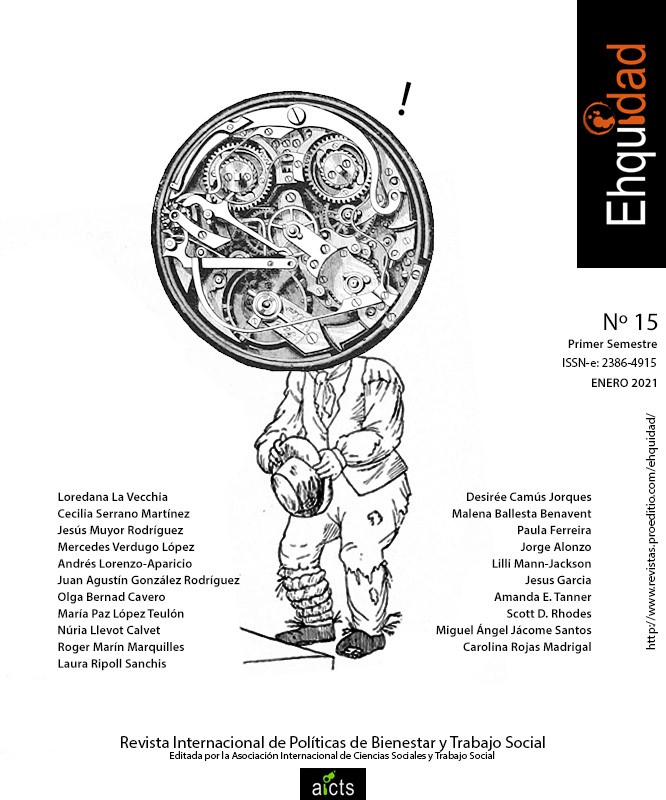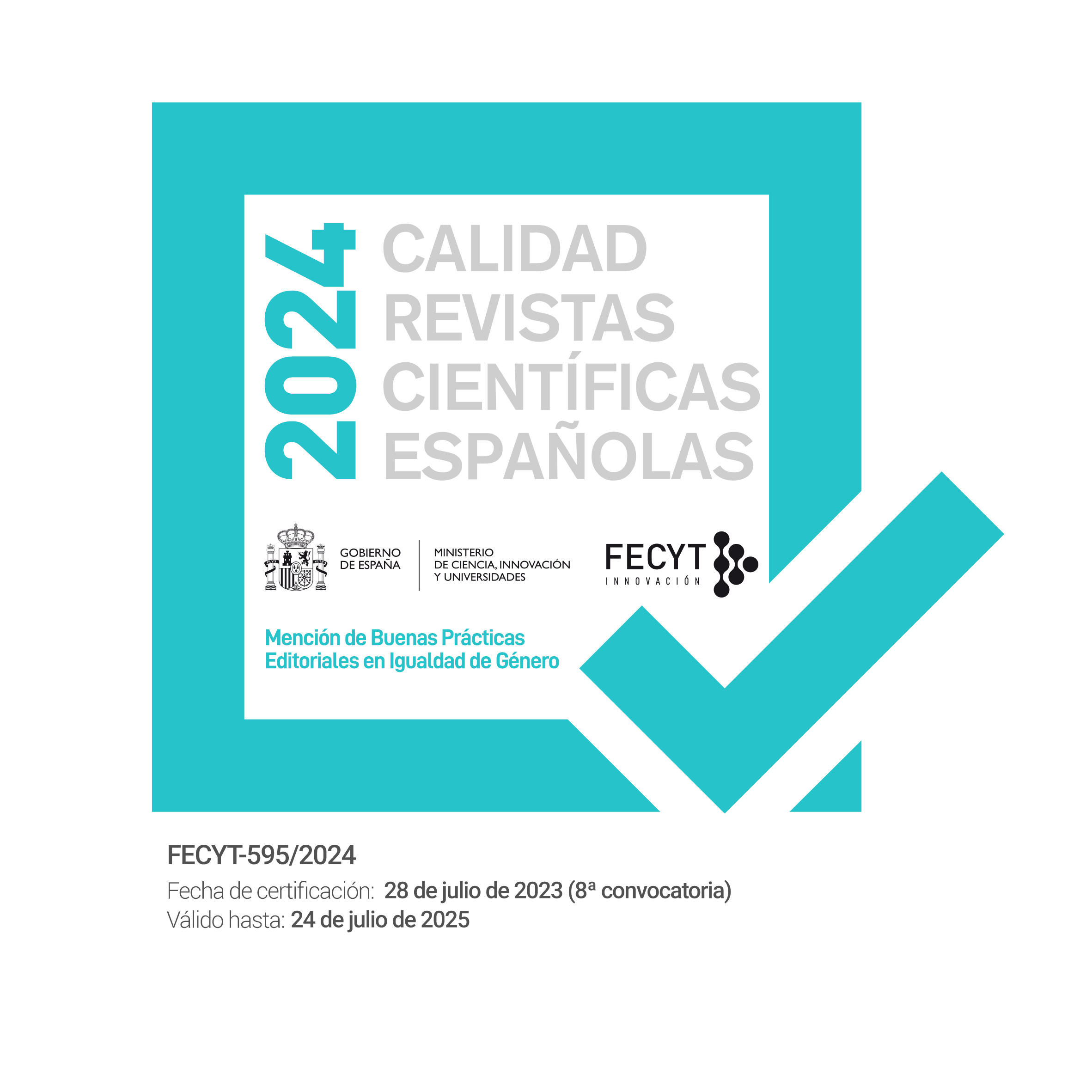Virus e scuola: riflessioni sui fattori che in Italia hanno acuito le conseguenze dell’emergenza sanitaria
DOI:
https://doi.org/10.15257/ehquidad.2021.0001Keywords:
SARS-COV-2, E-learning, School, FragilityAbstract
Italy was the first European country which has been affected by the fast spread of SARS-Cov-2, leading to a general lockdown that started on March 9, 2020, only two weeks after the diagnosis of the Italian patient zero. Such lockdown concerned also the school, that is, the social institution which suffered —and keeps suffering— the most the negative effects of the national restrictions whether because of the lack of precise indications regarding the didactics after the suspension of in-class activities or because of the deficiencies and criticalities that it has been facing since ages. It was only in April when teachers could eventually resort to e-learning; though, due to the lack of both methodological indications and adequate study plans, each school acted autonomously and the best they could.
In most cases, it was the teachers’ initiative and individual efforts that led to a successful didactics. As a matter of fact, teachers tried any kind of strategy to keep in touch actively with their students, as testified through the technique of the focus group. Although, in disagreement with the message of hope spread during the lockdown, not everything has gone well; that is, the virus has highlighted a chronical situation of fragility and vulnerability, whose negative consequences and effects seem to persist also in the future.
This essay aims at analysing what happened during the first Italian lockdown framing the impact of the COVID-19 pandemic on a sociocultural dimension. For this purpose, I will take into account the main contextual factors that have contributed to worsen —from the didactic and teaching perspective— the consequences of the spread of the virus.
Downloads
References
Batini, F., Bartolucci, M., Bellucci, C., & Toti, G. (2018). Failure and dropouts. An investigation into the relationship between students repeating a grade and dropout rates in Italy. Italian Journal of Educational Research, 21, 31-50.
Brummet, Q. (2014). The effect of school closings on student achievement. Journal of Public Economics, 119, 108-124. DOI: 10.1016/j.jpubeco.2014.06.010
Commissione Europea. (2010). Una strategia per una crescita intelligente, sostenibile e inclusiva, available in https://eur-lex.europa.eu/legal-content/IT/TXT/PDF/?uri=CELEX:52010DC2020&from=ro
Giacola, O., Piromalli, L. (2020). Apprendimenti a distanza a più velocità. L’impatto del COVID-19 sul sistema educativo italiano. Scuola democratica, early access, giugno 2020.
Giovanella, C., Passarelli, M., Persico, D. (2020). La didattica durante la pandemia: un’istantanea scattata dagli insegnanti a due mesi del lockdown. Bricks, 4, 24-39.
ISTAT (2020a). L’inclusione scolastica degli alunni con disabilità -A.S. 2019-2020. Roma: Istituto Nazionale di Statistica. https://www.istat.it/it/files/2020/12/Report-alunni-condisabilit%C3%A0.pdf
ISTAT (2020b). Aspetti della vita quotidiana 2019. Roma: Istituto Nazionale di Statistica. http://dati.istat.it/Index.aspx?QueryId=23020
ISTAT (2019). Le statistiche dell’ISTAT sulla povertà | Report ANNO 2018. Roma: Istituto Nazionale di Statistica. https://www.istat.it/it/files/2019/06/La-povert%C3%A0-in-Italia-2018.pdf
Kirshner, B., Gaertner, M., & Pozzoboni, K. (2010). Tracing Transitions: The Effect of High School Closure on Displaced Students. Educational Evaluation and Policy Analysis, 32(3), 407-429.
Lucisano, P. (2020). Fare ricerca con gli insegnanti. I primi risultati dell’indagine nazionale SIRD. “Per un confronto sulle modalità didattiche a distanza adottate nelle scuole italiane nel periodo di emergenza COVID-19”. Lifelong Lifewide Learning, 17, 3-25. DOI: https://doi.org/10.19241/lll.v16i36.551
Nuzzaci, A., Minello, R., Di Genova, N., Madia, S. (2020). Povertà educativa in contesto italiano tra istruzione e disuguaglianze. Quali gli effetti della pandemia? Lifelong Lifewide Learning, 17, 76-92. DOI: https://doi.org/10.19241/lll.v16i36.537
OCSE, Education at Glance 2020 (2020). https://www.oecd.org/education/the-impact-of-covid-19-on-education-insights-education-at-a-glance-2020.pdf
Riccardi, V., Donno, S., Bagnarol, C. (2020), Disuguaglianze territoriali e povertà educativa nell’emergenza Covid-19: uno studio sulle famiglie italiane e la necessità di “fare scuola ma non a scuola”. QTimes, Journal of Education, Techology and Social Studies, 4, 379-395.
Rocchi, F. (2020). Lasciare la scuola anzitempo: le possibili conseguenze del Covid sulla dispersione scolastica. Il Mulino, 4, 655-661.
Viner, R., Russell, S., Croker, H., Packer, J., Ward, J., Stansfield, C., Mytton, O., Bonell, C., Booy, R. (2020). School closure and management practices during coronavirus outbreaks including COVID-19: a rapid systematic review. The Lancet, 4(5), 397-404. DOI: https://doi.org/10.1016/S2352-4642(20)30095-X
Zuddas, A. (2020). Covid-19 e digital divide: tecnologie digitali e diritti sociali alla prova dell’emergenza sanitaria. OsserrvatorioAic, n. 3.












